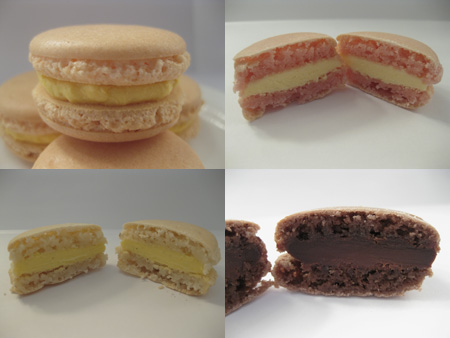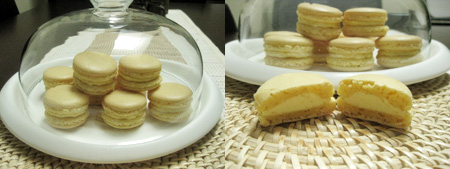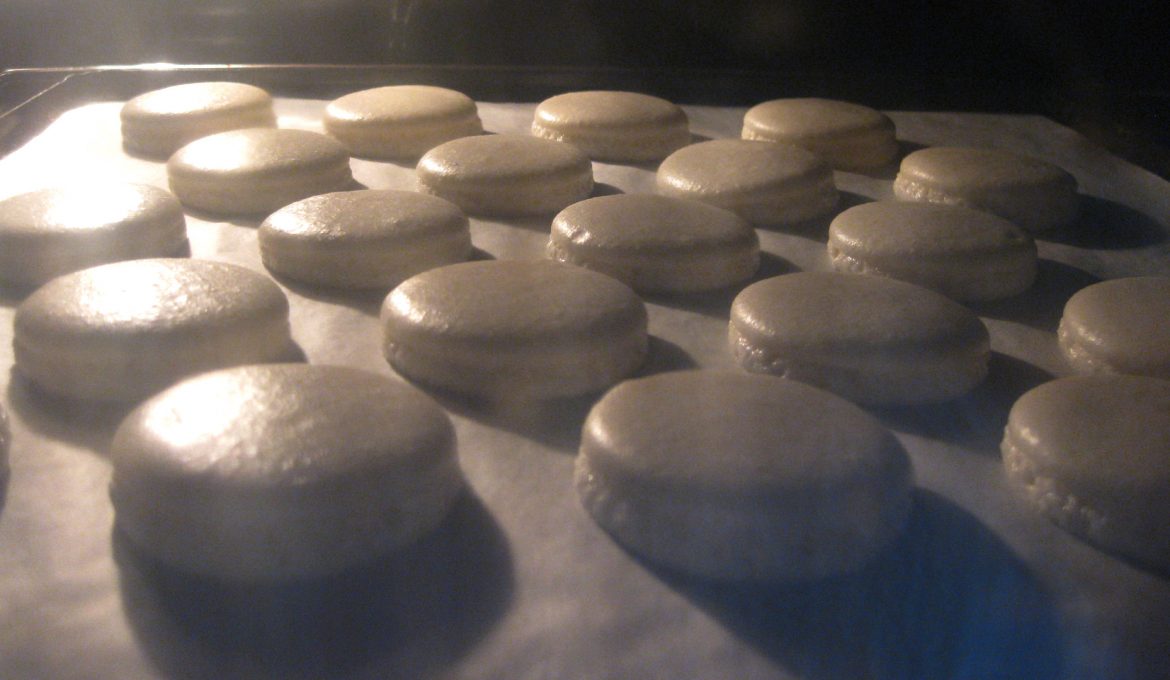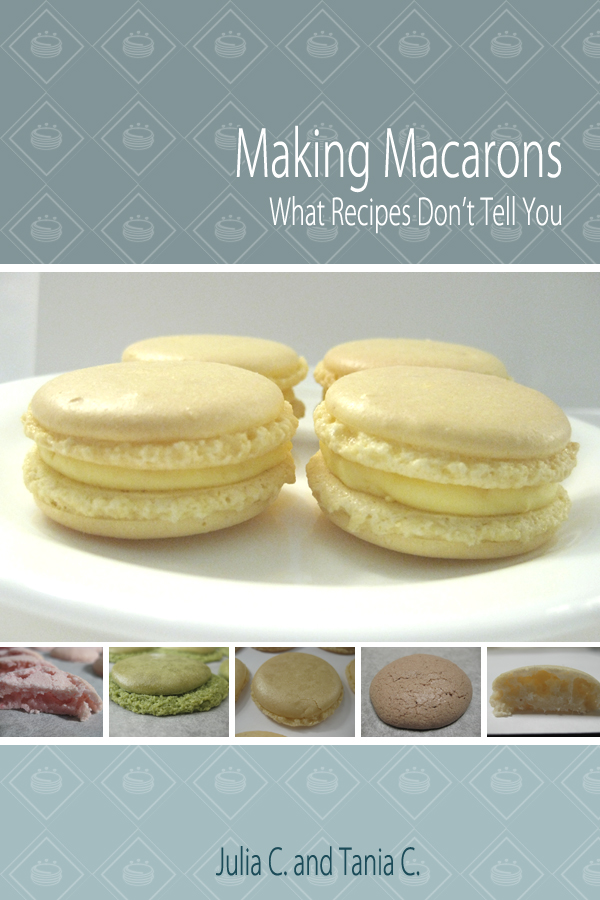We have read that one of the worst things that can happen to pastry chefs is when they move to a new kitchen and they have to work with a new oven (‘new’ referring to ‘different’ as opposed to the age of the oven). Despite using the same recipe, using the same temperature setting and baking time that have worked for their previous oven, they find the recipe and its settings do not work for the oven in their new kitchen. They find that they have to learn the oven and see what works and what doesn’t temperature-wise, which consequently means figuring out the baking time as well.
When working with a macaron recipe, the experience is not all that dissimilar. Instead of you testing the recipe on different ovens, the recipe moves around to various ovens and is tested when each of us use them on each of our ovens. When this recipe is used in various kitchens, you may find (through reading or hearing others’ outcome) that for some people the temperature setting and baking time stated in the recipe works for them, but for you it’s a disaster. This is because every oven is different. Different types exist as well as different models. Variations in design, technology and additional features in the ovens influence the optimal temperature, baking time and oven set-up.
To figure out what the optimal temperature is for your oven, we recommend obtaining an oven thermometer to start off. You want to make sure your oven temperature is accurate and that there isn’t too much variance in temperature during baking: macarons are sensitive to temperature and you want your oven temperature to be as accurate as possible. (If you find that the reading of your oven temperature is inaccurate, you will need to have it looked at and re-calibrated.) Once this is taken care of then you can begin testing your oven for the right temperature.
When testing temperatures, we suggest sending in partial batches. Don’t send in the full batch. Send in little batches at a time. Pipe your batter into groups of two or three and send them in separately: you will waste less and have more to test this way.
The main signs of too high oven temperature are browning, cracking and the collapse of the meringue. Sticky bottoms and pooling of the meringue are signs the temperature is too low. Uneven baking—that is, macaron shells on one side browns more than the other side—is the cause of uneven heat distribution. In the latter case you will need to make alterations to oven set-up and (say) rotate the baking sheet midway through baking.
If you find that no matter what temperature or adjustments you make you still get less than perfect macarons, it may be that the problems aren’t oven-related. It may very well be technique and drying related.
When you finally have a temperature that you believe works for your macarons and your oven, it’s time to figure out for how long. Use the recipe’s temperature and baking time as a guide. If you have set your temperature lower that its recommendation, bake the macarons longer, extend it for a minute at a time, making sure macarons aren’t over-baked. Similarly, if your temperature needs to be higher than the recipe’s recommendation, bake the macarons less.

There have been information suggesting baking macarons in convection ovens with the fan on and missing a bottom bake element produces not so great macarons, we can attest that this is not true. Our oven is a fan-forced convection oven with no option to turn off the fan, no bottom element, prone to hotspots and the temperature can sway as much as 5°C during baking. Our baking sheet occasionally pops during baking, too, causing one corner to be at a 20° angle. Still, we manage to produce full batches of macarons with glossy shells, ruffled feet and full interiors. Failed macarons are not the result of having the wrong kind of oven. To produce great macarons, you must first get your technique right and then dry your macarons then study your oven. Do the aforementioned correctly, and macaron shells will materialise. Don’t give up. You can bake macarons in any oven!
This concludes the series on Macarons, Quest for Perfection—at least for the time being. We may add a blog to the series in the future relating to macarons using the Italian Meringue. Just before we sign off from this blog series, though, we would like to do a bit of self-promotion for our new eBook we published on macarons, which covers much more information than we’ve done in this blog series and is available for purchase.

In our Making Macarons: What Recipes Don’t Tell You eBook, you can find out more factors that affect the success of macarons and new information which has not been covered in this blog series. We cover not only what factors affects turning out perfect batches of macarons, but also how they affect them. We provide detailed information about the techniques used, the ideal conditions for baking macarons (humidity levels and temperature) and more information about baking macarons in ovens and our oven settings and set-up. The book also includes a troubleshoot section for macarons with colour photos, discussing the many problems macarons encounter, their cause(s) and the solution(s) to the problem.
We hope you have time to traverse over to our page on our Making Macarons: What Recipes Don’t Tell You eBook. If you go as far as purchasing a copy, we will be forever grateful for your purchase and support! The price of our book is around the price of two macarons. Imagine how many you could turn out. You’ll never have to spend a dime on buying macarons again once you start turning out batches and batches of beautiful macarons shells yourself after reading this eBook of ours. ; oP ; oP.
Happy macaron baking!
– Julia and Tania. : o) : o).
See our other posts in Macarons, Quest for Perfection blog series:
Macarons, Quest for Perfection – Recipe, Method, Environment and Equipment
Macarons, Quest for Perfection – Technique, Macaronnage
Macarons, Quest for Perfection – Drying Time
Macarons, Quest for Perfection – Italian Meringue Method vs. French Meringue Method
ADVERTISEMENT





